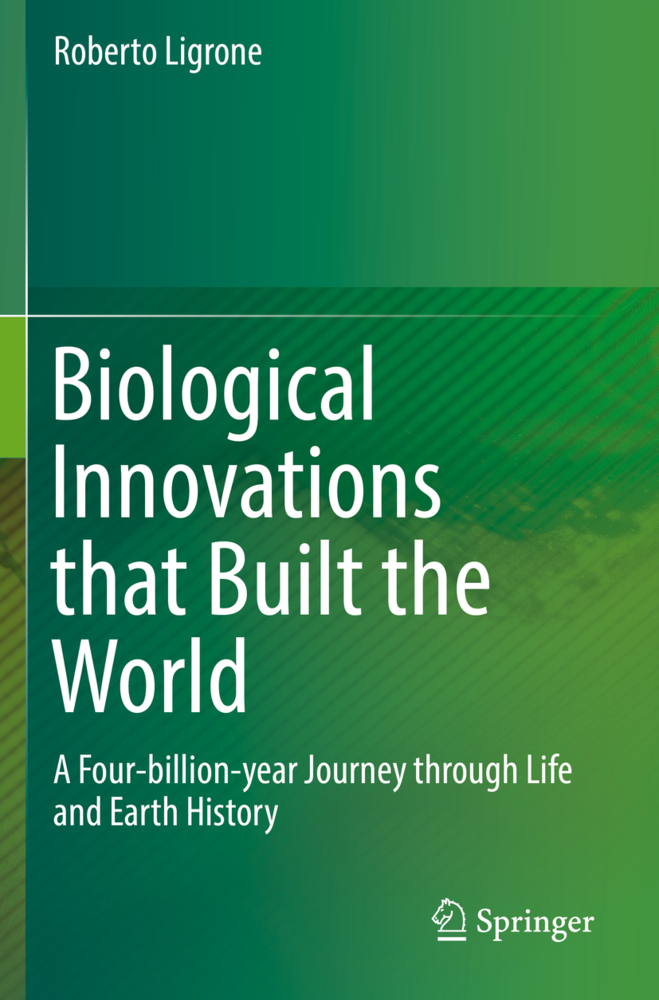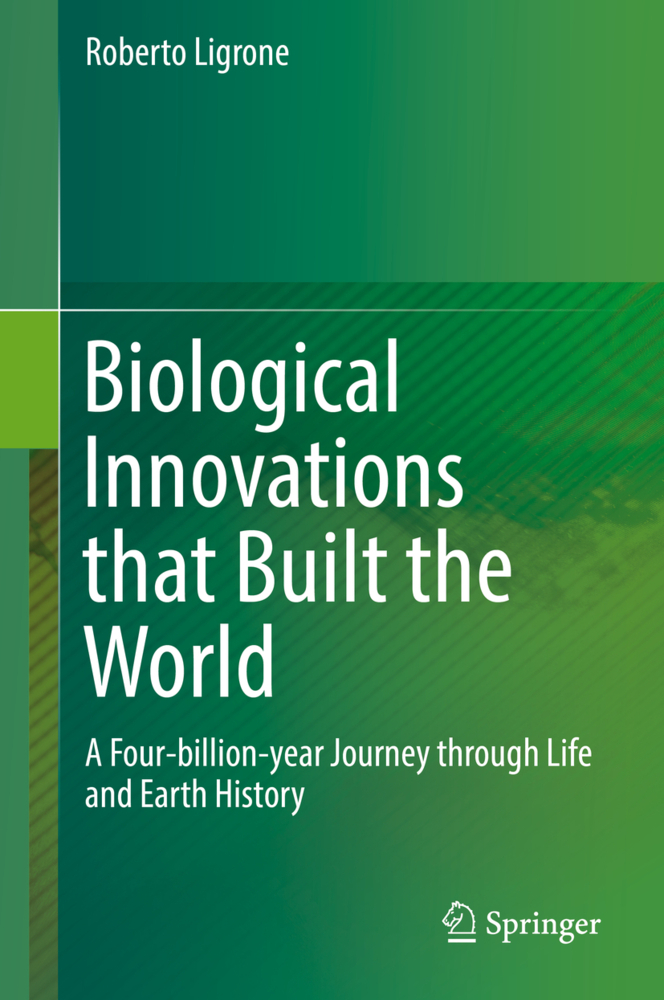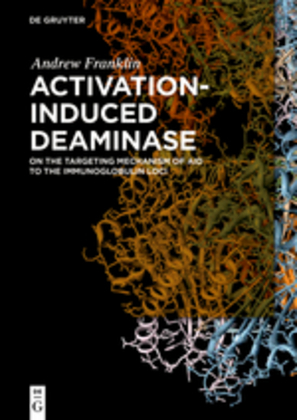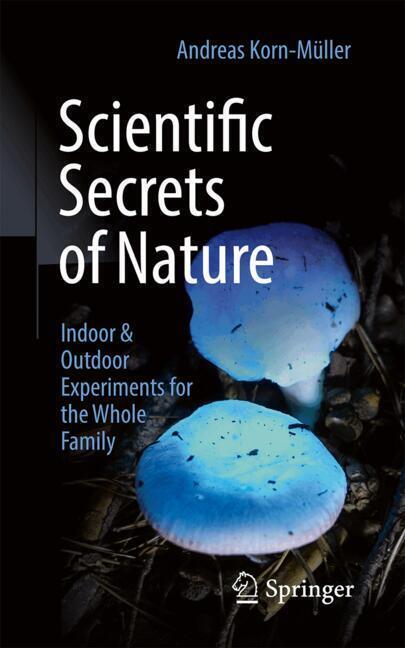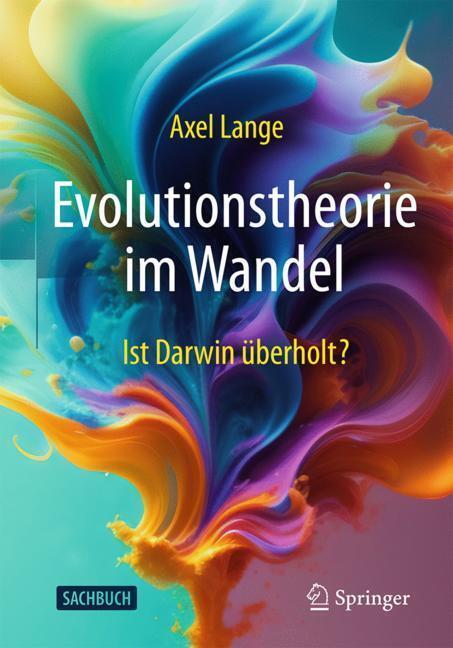Biological Innovations that Built the World
A Four-billion-year Journey through Life and Earth History
Biological Innovations that Built the World
A Four-billion-year Journey through Life and Earth History
The book is a detailed account of major biological events that contributed to create the present world and our species, with emphasis on cause-effect interrelationships and environmental impact. Its main goal is to guide the reader toward an understanding of the continuity of life across diversity, and of its large-scale interactions with the planet. Combining scientific soundness with a constant effort for clarity, the book begins with a cloud of dust in a corner of the Galaxy and, covering an immense lapse of time, terminates with an organism that ponders about the texture of the Universe. Comprehensive, updated references added to each chapter will help the reader wishing to expand any of the topics. A glossary explains less common technical terms.
<p></p><p>1. Introduction</p><p> </p><p>2. The Origins </p><p>2.1 Introduction</p>2.2 Birth of The Solar System<p></p><p>2.3 The Earth </p><p>2.4 The Start of Tectonics</p><p>2.5 Tectonic Processes are Essential to Life</p><p>2.6 Genesis of The Atmosphere-Ocean-Continental Crust (AOC) System</p> <p></p><p>3. The Birth of Life </p><p>3.1 Introduction</p><p>3.2 Seafloor Hydrothermal Vents as Settings for the Emergence of Life</p><p>3.3 A Primordial Role for RNA?</p><p>3.4 The Origin of the Genetic Code</p><p>3.5 A RNA-Protein World</p><p>3.6 Biological Membranes</p><p>3.7 From Geochemistry to Biochemistry: The Emergence of an Autonomous Metabolism</p>3.8 DNA Replaced RNA as the Repository of Biological Information<p></p><p>3.9 The Bacteria-Archaea Membrane Divide: Ancestral or Derived?</p><p>3.10 Concluding Remarks</p><p> </p><p>4. Moving to the Light: The Evolution of Photosynthesis </p><p>4.1 Introduction</p><p>4.2 Light, Pigments and Photosystems</p><p>4.3 Accessory Pigments</p><p>4.4 The Photochemical Process in Anoxygenic Bacteria</p><p>4.5 Evolutionary Interrelationships of Type-1 and Type-2 Photosystems</p>4.6 Oxygenic Photosynthesis<p></p><p>4.7 Pathways of Carbon Photosynthetic Fixation</p><p> </p><p>5. The Great Oxygenation </p><p>5.1 Introduction</p><p>5.2 Planetary Oxygen Balance</p><p>5.3 Methane was Probably a Key Driver of Planetary Oxygenation</p><p>5.4 The GOE was Associated with a Phase of Climatic Instability</p>5.5 After the GOE, the Earth Stabilized in a Low-Oxygen State for Over One Billion Years <p></p><p>5.6 The Earth Entered a High-Oxygen Phase About 800 Million Years Ago</p>5.7 The Impact of Oxygen on Biological Evolution<p></p><p> </p><p>6. Eukaryotes</p><p>6.1 Introduction</p><p>6.2 Rise and Fall of the Archaezoan Model of Eukaryogenesis</p><p>6.3 Post-Archaezoan Models</p><p>6.4 The Neomuran Model</p><p>6.5 The Origin of the Nucleus</p>6.6 Was the Host a Primitive Eukaryote or a Complex Archaeon?<p></p><p>6.7 The Mitochondria</p><p>6.8 The Last Eukaryote Common Ancestor (LECA) had all the Fundamental Traits of Eukaryotic Cells</p><p>6.9 Eukaryote Phylogeny and Systematics</p><p>6.10 Timing of Eukaryote Appearance and Diversification</p>6.11 Concluding Remarks<p></p><p> </p><p>7. Sexual Reproduction</p>7.1 Introduction<p></p><p>7.2 Origin of Meiotic Sex</p><p>7.3 The Case of Parthenogenetic Rotifers</p><p>7.4 Sexual Reproduction Sets Strong Species Boundaries in Eukaryotes</p><p>7.5 Species Boundary in Prokaryotes is Conventional</p>7.6 Gamete Differentiation and Genders<p></p><p> </p><p>8. Multicellularity</p><p>8.1 Introduction</p><p>8.2 Cellular Specialization and Levels of Organization in Multicellular Organisms</p>8.3 Stem Cells and Germ Line<p></p><p>8.4 Concluding Remarks</p><p> </p>9. The Chloroplast and Photosynthetic Eukaryotes<p></p><p>9.1 Introduction</p><p>9.2 Birth of the Primary Chloroplast</p><p>9.3 The Plants (Archaeplastida)</p><p>9.4 Secondary Chloroplasts</p><p>9.5 Phylogeny of Eukaryotes with Secondary Chloroplasts</p><p>9.8 Chloroplast Thieves and Other Stories</p><p>9.7 Plastid Division</p>9.8 Storage Polysaccharides<p></p><p> </p><p>10. The Animals</p>10.1 Introduction<p></p><p>10.2 Embryo Development and Body Symmetry</p><p>10.3 Animal Systematics</p><p>10.4 Cellular Junctions and Epithelia</p><p>10.5 The Intestine and Animal Evolution</p><p>10.6 Chordates</p><p>10.7 The Impact of Animals on the Global Environment</p><p> </p>11. Land Plants<p></p><p>11.1 Introduction</p><p>11.2 An Early Step in Plant Terrestrialization was a Change in the Ancestral Life Cycle</p><p>11.3 Early Land Plants</p><p>11.4 Stomata and Homeohydry</p><p>11.5 Land Plant Systematics</p><p>11.6 The Xylem: A Lignified Water-Conducting System</p><p>11.7 Multiple Evolution of Leaves And Roots</p>11.8 Land Plants Have Co-Evolved with Fungal Symbionts<p></p><p>11.9 The Impact of Land Plants on the Global Environment</p><p> </p><p>12. The Emergence of Humanity</p><p>12.1 Introduction</p><p>12.2 The Evolution of Bipedality</p><p>12.3 Australopythecines</p><p>12.4 The Genus Homo</p><p>12.5 Origin and Diffusion of Modern Humans</p><p>12.6 Death from a Distance: High-Speed Throwing</p><p>12.7 Why are Humans Naked?</p>12.8 Reproductive Biology of Humans<p></p><p>12.9 The Evolution of Language</p><p>12.10 The "Cognitive Revolution"</p><p>12.11 The Evolution of Cooperation and the Emergence of Culture</p><p>12.12 The Agricultural Revolution</p>12.13 The Evolution of Social Organization<p></p><p>12.14 The Search for "Human" Genes</p><p>12.15 The Impact of Humanity on the Global Environment</p><p> </p><p>13. Synopsis</p><p> </p><p>14. Glossary</p><p> </p><p>15. Analytic Index</p><p></p>
Ligrone, Roberto
| ISBN | 978-3-030-16059-3 |
|---|---|
| Artikelnummer | 9783030160593 |
| Medientyp | Buch |
| Auflage | 1st ed. 2019 |
| Copyrightjahr | 2020 |
| Verlag | Springer, Berlin |
| Umfang | XIX, 490 Seiten |
| Abbildungen | XIX, 490 p. 192 illus., 47 illus. in color. |
| Sprache | Englisch |

